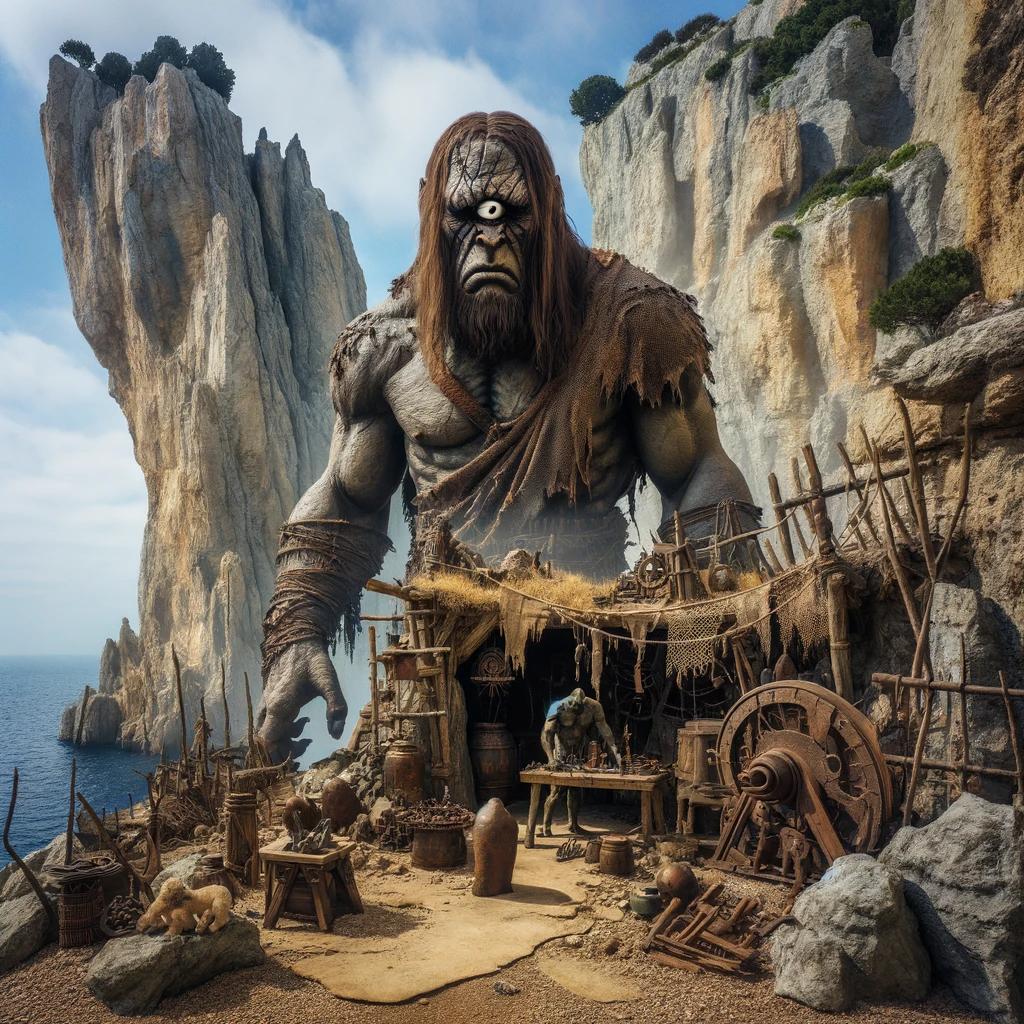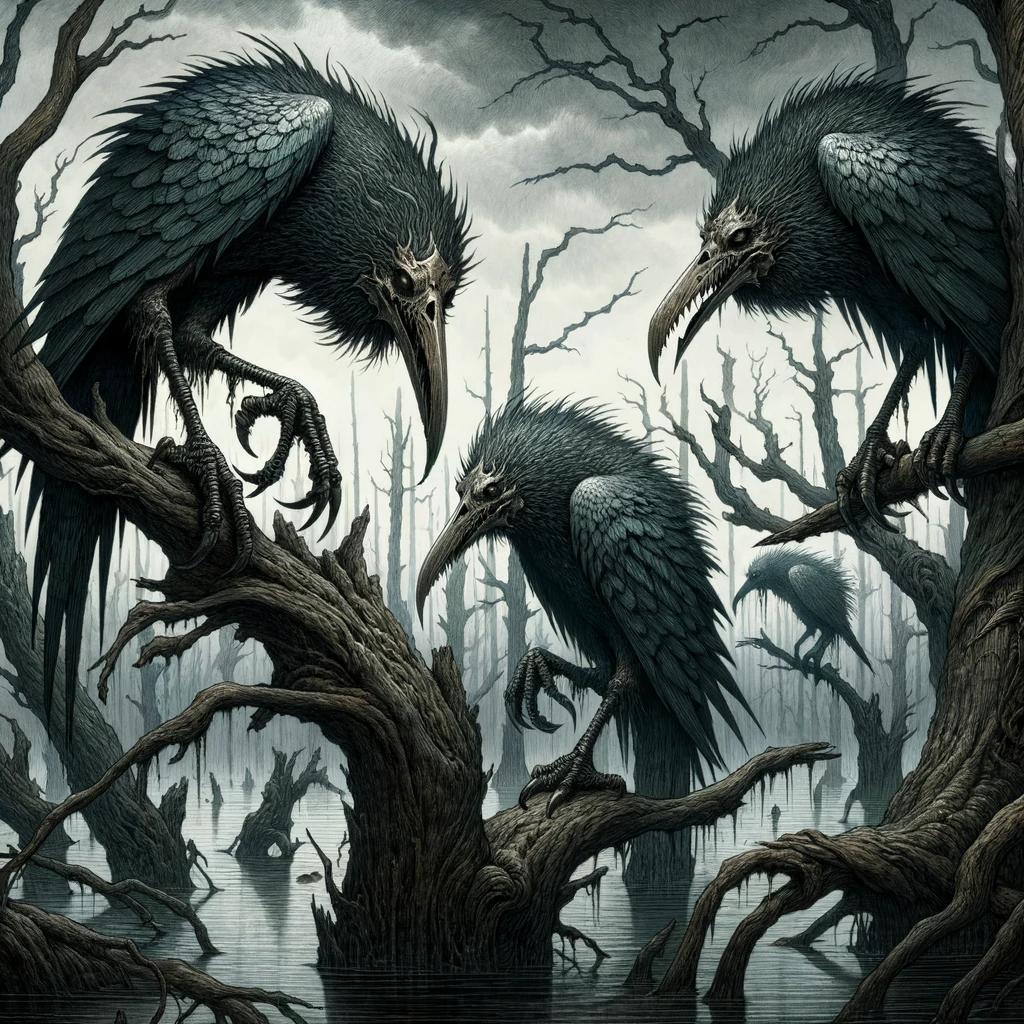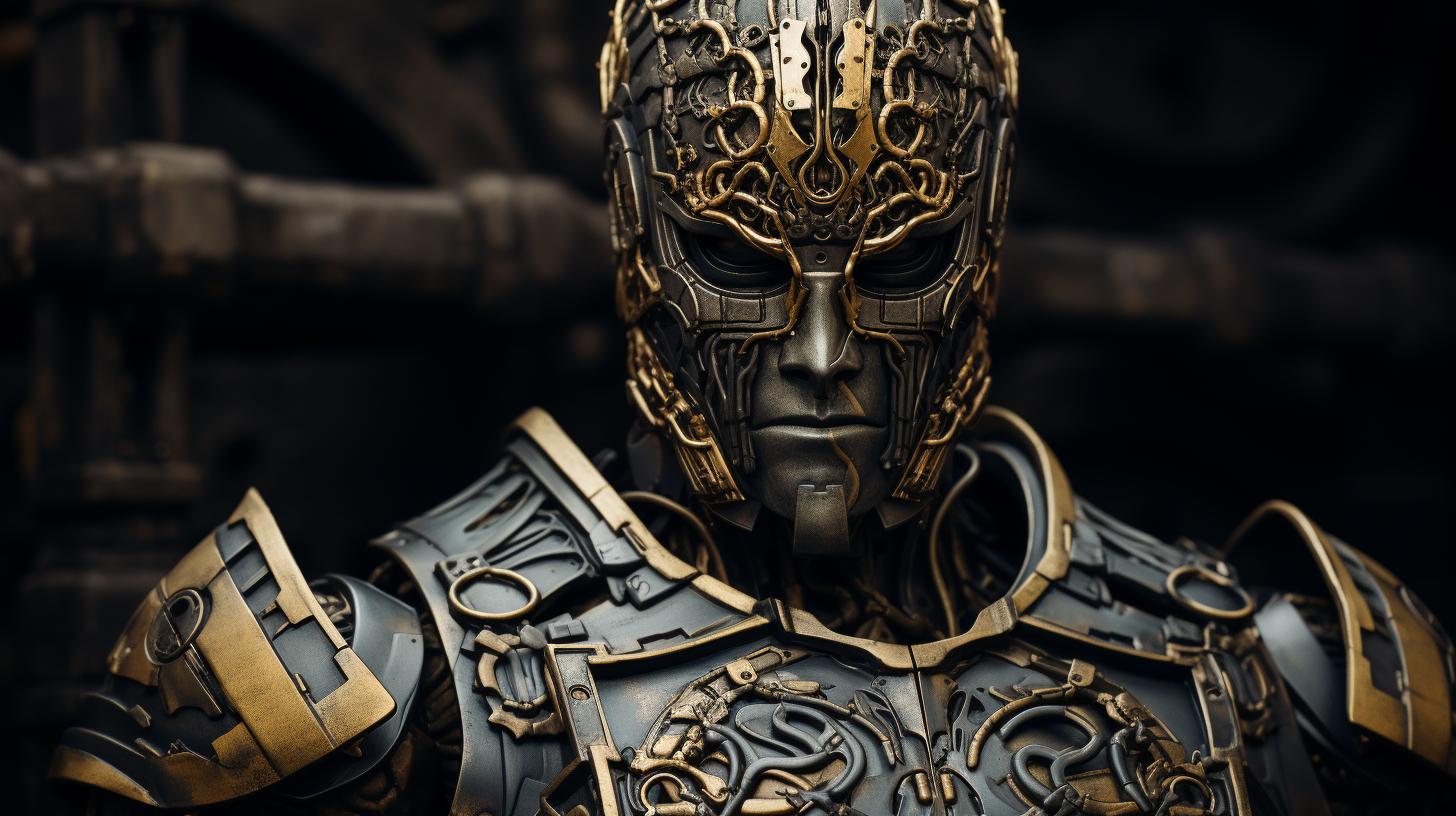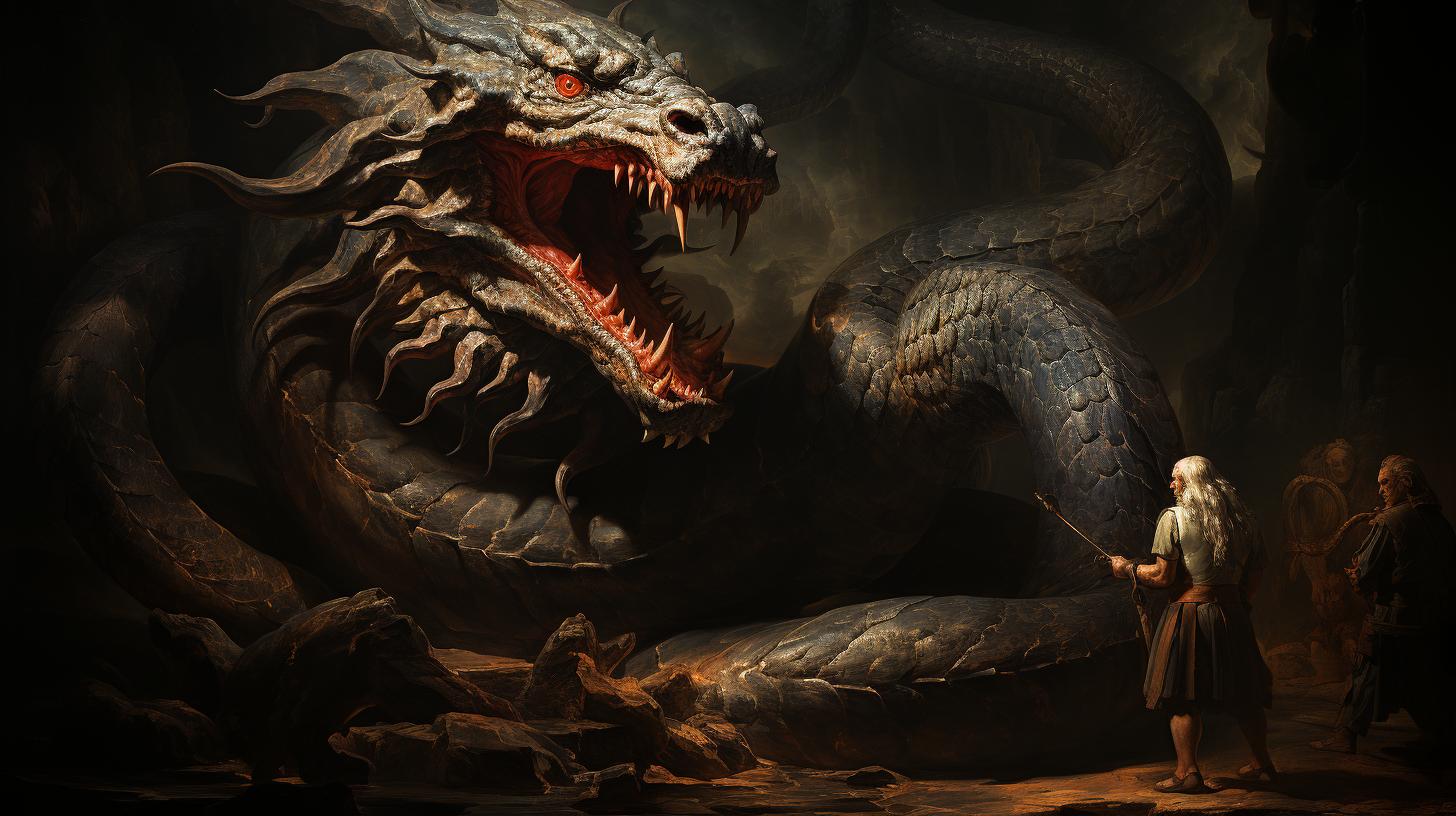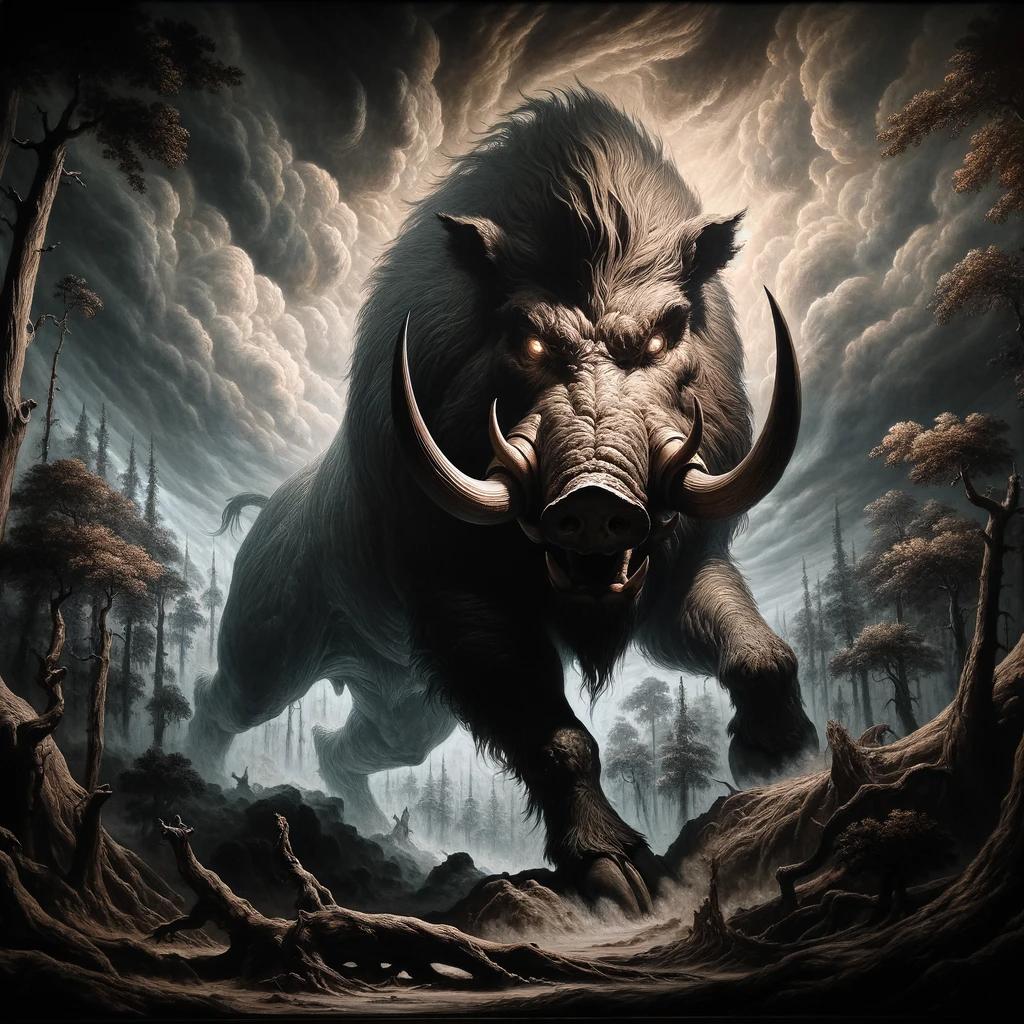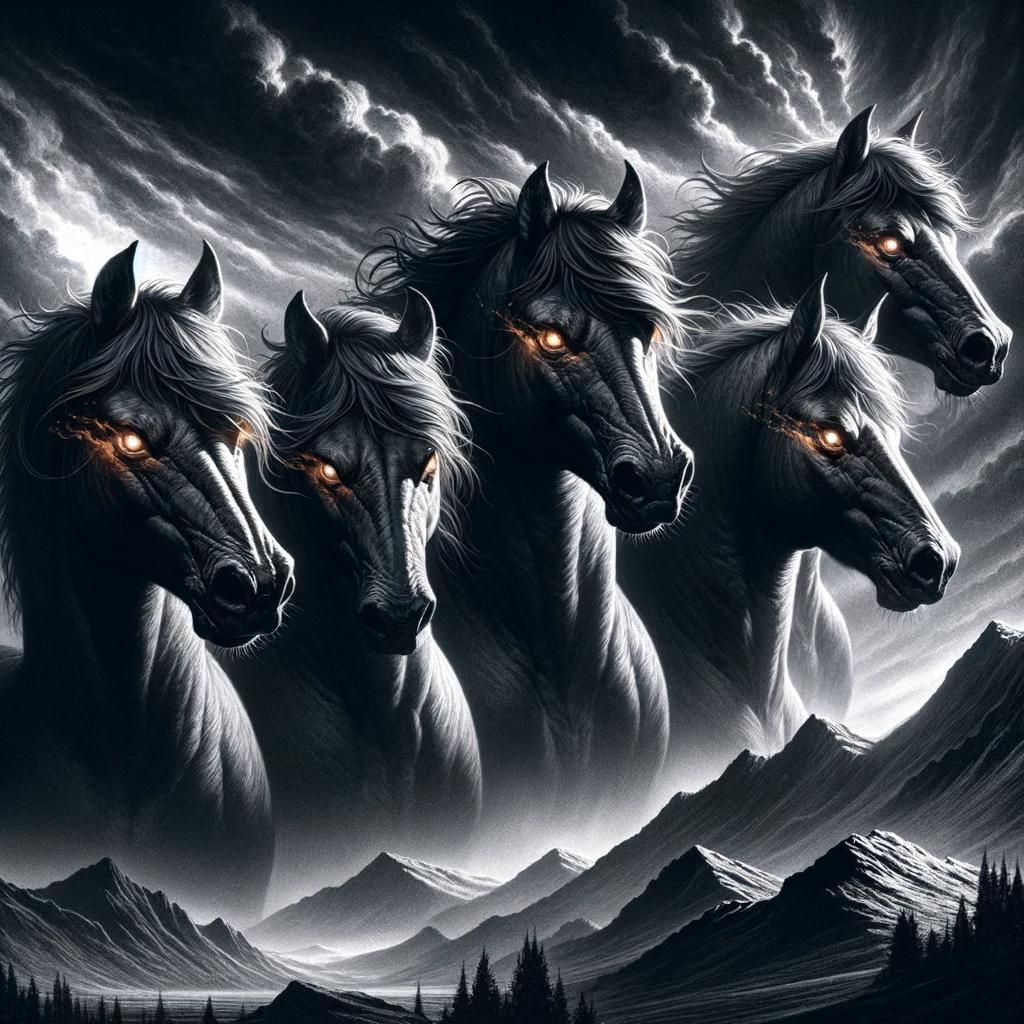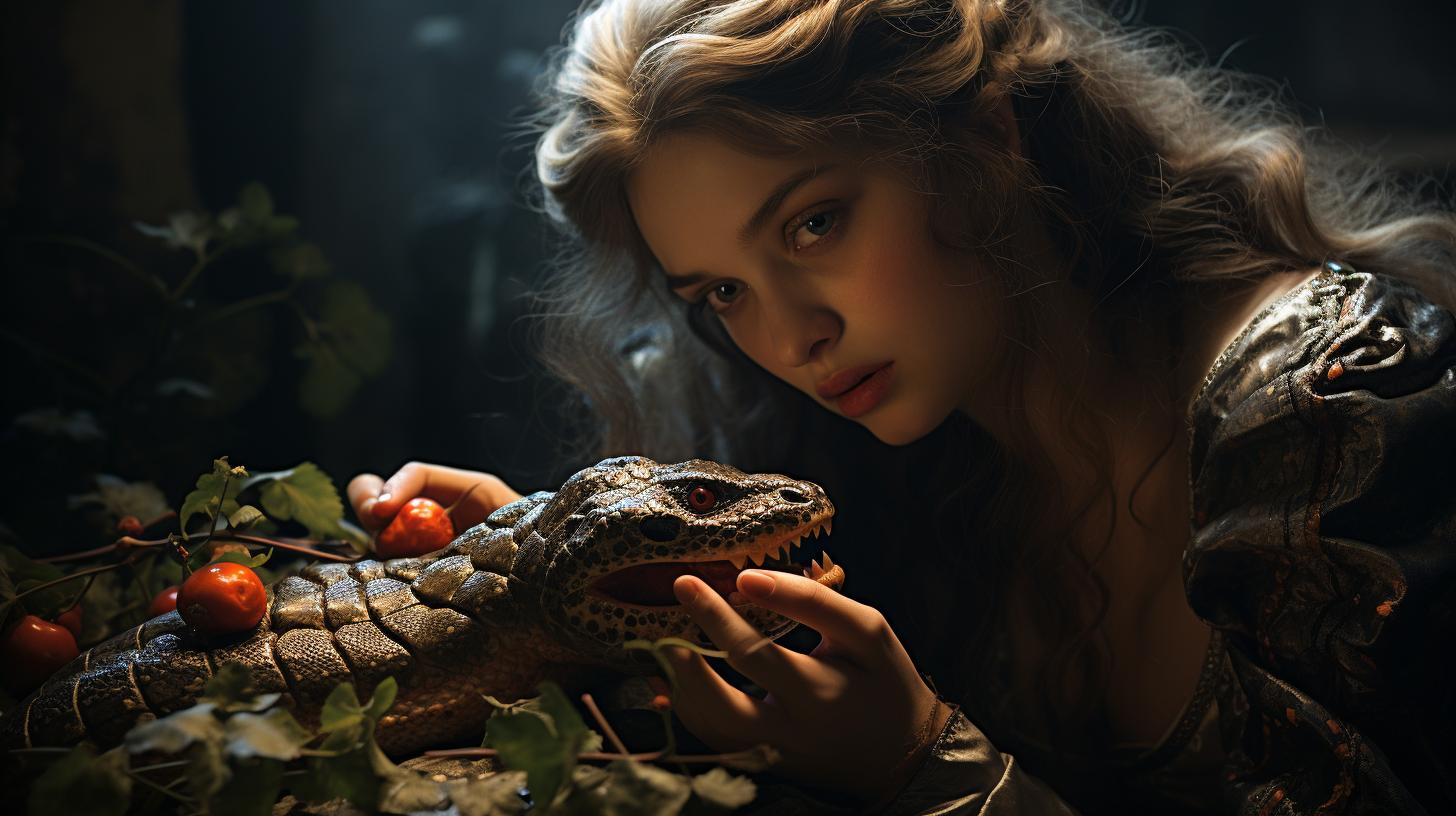The Cyclops in Greek Mythology: Unveiling the Enigmatic Giant
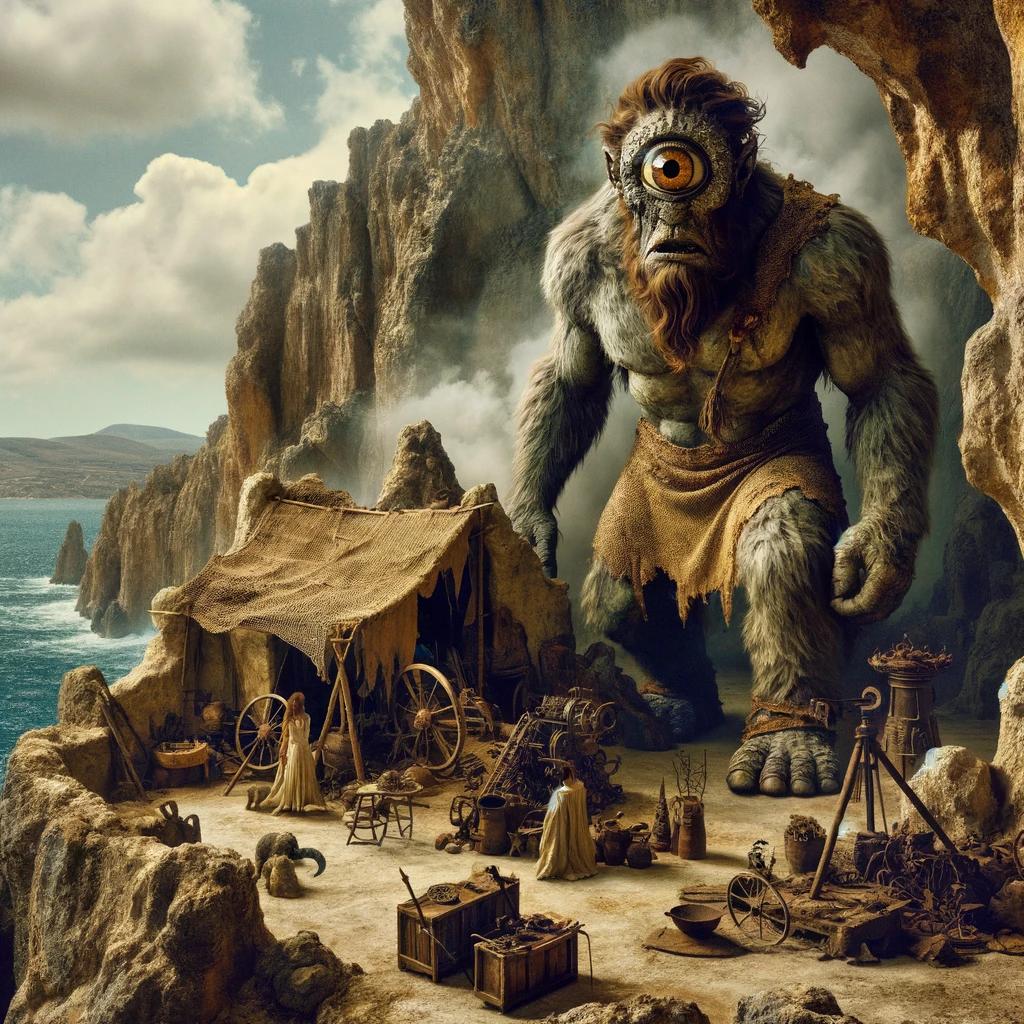
The Cyclops in Greek Mythology has fascinated scholars and enthusiasts for centuries. These one-eyed giants hold a prominent place in ancient Greek culture and literature, including Homer’s Odyssey. They are not only known for their physical appearance but also for their connections to the Titans and their symbolic significance.
Additionally, the Cyclops’ legacy extends to modern culture, with their presence in art, literature, and popular culture. In this article, we will delve into the origins, mythology, symbolism, and various interpretations surrounding the enigmatic Cyclops figures in Greek mythology.
The Origins of Cyclops in Greek Mythology
According to ancient Greek mythology, the Cyclops were giant humanoid creatures with a single eye in the middle of their forehead. These enigmatic beings trace their origins back to the primordial gods known as the Titans.
The Cyclops were the offspring of Uranus, the sky god, and Gaia, the earth goddess.
The most well-known and formidable Cyclops was Polyphemus, encountered by the Greek hero Odysseus during his epic journey back home in Homer’s Odyssey.
However, the origins of the Cyclops can be traced even further back to the Titanomachy, the great war between the Titans and the Olympian gods.
During the Titanomachy, the Cyclops played a crucial role in helping the Olympians overthrow the Titans.
They provided Zeus, the king of the gods, with his mighty thunderbolts, which gave him the power to defeat the Titans and establish the rule of the Olympian gods.
The Cyclops were not just known for their physical prowess and association with the gods.
They also held significance in ancient Greek culture and society. These creatures were often represented in art, pottery, and literature, showcasing their prominent status in Greek mythology.
Their symbolic nature extended beyond their appearance, as the Cyclops represented strength, power, and the forces of nature.
Their single eye was seen as a symbol of insight and divine knowledge, as well as a reflection of their cyclical nature, evoking the cyclical patterns of life and the seasons.
The origins of the Cyclops in Greek mythology are a fascinating aspect of ancient Greek culture that continues to intrigue and captivate us today. Exploring their origins sheds light on their mythological significance, their role in the Titanomachy, and their cultural impact on ancient Greece.
The Mythological Significance of the Cyclops
The Cyclops hold a profound mythological significance within Greek mythology, representing more than just monstrous creatures with one eye. These enigmatic beings serve as symbolic embodiments of power, fear, and human perception.
Their extraordinary physicality and mythical connections make them intriguing figures to explore.
In Greek mythology, the Cyclops are often associated with craftsmanship and technological prowess. They are believed to possess exceptional skills in metalworking, forging divine weapons and artifacts for the gods.
Their mastery over the forge symbolizes their role as creators, contributing to the shaping of the world and its divine order.
Beyond their crafting abilities, the Cyclops are also linked to themes of destiny and fate.
In some accounts, they possess the gift of prophecy, possessing foresight that can foretell future events. This prophetic aspect of the Cyclops adds an air of mystery and divine knowledge to their character.
The Cyclops’ appearance and unmatched strength further emphasize their significance. Their massive size and singular eye make them formidable beings, representing raw power, both physical and metaphorical. Their imposing stature signifies their dominance and the fear they evoke.
Additionally, the Cyclops’ encounters with prominent heroes, such as Odysseus, underscore their symbolic meaning. These encounters often serve as tests of bravery, wit, and resourcefulness, highlighting human characteristics in contrast to the Cyclops’ brute force and limited perception.
These clashes signify the struggle between intellect and strength, cunning and power.
In essence, the Cyclops in Greek mythology hold a multifaceted significance that encompasses themes of craftsmanship, destiny, power, and the contrast between human intellect and brute force.
Exploring their mythological symbolism sheds light on the rich narrative tapestry of ancient Greek culture.
The Cyclops in Homer’s Odyssey
The epic poem ‘The Odyssey’ by the ancient Greek poet Homer introduces one of the most famous encounters with the Cyclops. The protagonist, Odysseus, and his crew find themselves stranded on the island of the Cyclops, ruled by the powerful giant Polyphemus.
This dangerous and formidable creature poses a great challenge for Odysseus and his men as they attempt to escape.
The Encounter with Polyphemus
Polyphemus, son of Poseidon, is described as a massive Cyclops with a single eye in the center of his forehead. He embodies the archetype of the savage and uncivilized brute.
When Odysseus and his crew enter the cave of Polyphemus, they unwittingly become trapped as the Cyclops blocks the only exit with a massive boulder. Polyphemus devours several of Odysseus’ men, causing great despair and fear among the remaining survivors.
As the situation becomes dire, Odysseus devises a plan to aid their escape. He introduces himself to Polyphemus as ‘Nobody’ and offers the Cyclops a potent wine. Taking advantage of the Cyclops’ intoxication, Odysseus blinds him by driving a sharpened wooden stake into his eye while he sleeps.
The pain and fury of Polyphemus attracts the attention of neighboring Cyclopes, but they are unable to help him since he calls out for help as if ‘Nobody’ had harmed him.
This clever ruse allows Odysseus and his men to escape the cave and continue their journey.
Odysseus and his Crew’s Strategies
Throughout the encounter with Polyphemus, Odysseus demonstrates his resourcefulness and strategic thinking. He uses his wit to come up with a plan that exploits the Cyclops’ weakness, his single eye, and avoids direct confrontation.
By introducing himself as ‘Nobody’, Odysseus ensures the confusion and inability of the Cyclops to identify and seek revenge on him specifically.
In addition, Odysseus displays leadership and cunning by taking advantage of the Cyclops’ intoxication.
This strategic move allows him to blind Polyphemus effectively, disabling the giant and securing their escape. Odysseus’ ability to adapt and think on his feet showcases his heroism and intelligence amidst the perilous circumstances.
The Role of Cyclops in Ancient Greek Culture and Society
Cyclops in Art and Literature
The Cyclops in ancient Greek culture and society played a significant role in various artistic and literary expressions. Artists, particularly vase painters, depicted Cyclops in their works, capturing their distinct features, such as the single eye and immense size.
These artistic representations often showcased dramatic encounters between Cyclops and heroes like Odysseus, showcasing the fear and power associated with these mythological creatures.
Cyclops in Religion and Rituals
Beyond art and literature, Cyclops also had a role in ancient Greek religion and rituals. While not central figures in religious practices, they were believed to have connections to the divine.
Some believed that Cyclops were worshipped as deities associated with natural forces, while others saw them as supernatural beings linked to the creation of the world. Moreover, they were often invoked in rituals seeking protection or invoking their strength.
The Cyclops and the Titans: Connections and Conflict
The Cyclops in Greek mythology had significant connections and conflicts with the Titans, the powerful divine beings preceding the Olympians. These relations shed light on the origins and roles of the Cyclops figures in ancient Greek cosmology.
Cyclops and the Titan Cronus
One significant connection between the Cyclops and the Titans is their association with the Titan Cronus. According to ancient myths, Cronus was the father of the Cyclops, as well as the Titans.
The Cyclops, specifically Brontes, Steropes, and Arges, were the offspring of Cronus and his wife, the Titaness Rhea. This familial ties between the Cyclops and Cronus establish their close relationship within the divine lineage.
Cyclops’ Involvement in the Titanomachy
The Titanomachy, the epic battle between the Titans and the Olympians, also involved the Cyclops. In this conflict for cosmic supremacy, the Cyclops played a vital role as powerful allies of the Olympians.
During the Titanomachy, the Cyclops forged three formidable weapons for the Olympians: Zeus’ thunderbolt, Poseidon’s trident, and Hades’ helm of darkness. These weapons secured the victory of the Olympians and established their dominance over the Titans.
The Cyclops’ contribution to the overthrow of the Titans solidifies their involvement in the conflict and highlights their status as crucial allies to the gods.
- Brontes, Steropes, and Arges played a pivotal role in the Titanomachy by providing the Olympians with powerful weapons.
- The Cyclops’ creation of Zeus’ thunderbolt, Poseidon’s trident, and Hades’ helm of darkness contributed to the Olympians’ victory.
- Their involvement strengthens their bonds with the Olympians and their significance in the cosmic power struggle.
Understanding the connections and conflicts between the Cyclops and the Titans illuminates the intricate mythology surrounding these enigmatic one-eyed giants and their place in ancient Greek cosmology.
Cyclops in Historical Accounts and Geography
Exploring the historical accounts and geographical references surrounding the Cyclops in Greek mythology provides valuable insights into their existence and cultural significance. Ancient texts written by renowned authors such as Hesiod and Pliny the Elder offer glimpses into the perceptions and descriptions of these mythical creatures.
Ancient Accounts by Hesiod and Pliny the Elder
Hesiod, the ancient Greek poet, describes the Cyclops in his work “Theogony” as children of Uranus and Gaia, born from the blood of Uranus. These accounts detail the Cyclops as powerful beings with incredible strength and unique physical characteristics, such as their single eye.
Pliny the Elder, a Roman naturalist and philosopher, references the Cyclops in his work “Natural History.” He gathers information from various sources, including Greek mythology, to present a broader understanding of these mythical figures.
Pliny reinforces the legends of their enormous size and notorious deeds, portraying them as awe-inspiring entities.
Geographical References and Stories
Geographical references also contribute to the mythology of the Cyclops. The Greek island of Sicily, particularly Mount Etna, is believed to be the home of Polyphemus, the most famous Cyclops encountered by Odysseus in Homer’s Odyssey.
This association with a real location adds an air of authenticity to the legends surrounding the Cyclops.
Additionally, stories of encounters with Cyclops have been passed down through generations, further perpetuating their presence in various regions.
These tales often depict the Cyclops as fearsome beasts with the power to shape the landscape or control natural elements, emphasizing their mythical status.
- The geographical references to the Cyclops add layers of intrigue and geographical context to their mythology.
- Hesiod and Pliny the Elder’s ancient accounts shape our understanding of their origins and characteristics.
- Stories passed down through generations highlight the endurance and cultural impact of the Cyclops in different regions.
Overall, the historical accounts and geographical references surrounding the Cyclops provide a solid foundation for exploring their presence in Greek mythology.
These sources contribute to our understanding of their origins, characteristics, and enduring significance in ancient Greek culture.
The Symbolism and Interpretations of the Cyclops
The Cyclops in Greek mythology has held deep symbolism and has been subject to various interpretations over time. Explore the intriguing aspects surrounding these one-eyed giants, their significance in folklore, and the psychological and literary interpretations they have inspired.
One-eyed Giants in Mythology and Folklore
One-eyed creatures appear in mythologies and folklores across different cultures, often symbolizing unique attributes and beliefs. In Greek mythology, the Cyclops represent power, strength, and primal force. Their single eye is seen as a metaphor for heightened perception, intuition, and a mysterious connection to the divine.
Psychological and Literary Interpretations
Psychologists and literary scholars have delved into the symbolical nature of the Cyclops, exploring their representation in human psychology and literature. The Cyclops can be interpreted as an embodiment of the shadow self, representing our suppressed desires, fears, and uncontrollable instincts.
They serve as a reminder of the importance of facing and integrating our inner darkness to achieve wholeness.
In literature, the Cyclops often serve as antagonistic figures, representing obstacles and challenges that heroes must overcome on their journeys of self-discovery and transformation.
They embody the trials and tribulations of human existence, and the heroes’ encounters with them reflect the universal struggles faced in navigating the human experience.
The psychological and literary interpretations of the Cyclops offer profound insights into the human psyche and provide valuable lessons on personal growth, resilience, and the importance of embracing both light and dark aspects of our nature.
The Legacy of the Cyclops in Modern Culture
The legendary Cyclops continue to wield significant influence in various forms of modern culture, showcasing their enduring legacy and captivating the imagination of audiences. From literature and film to art and popular culture, the Cyclops’ presence remains pervasive, contributing to the rich tapestry of modern storytelling and artistic expression.
Influence in Literature, Film, and Art
Cyclops characters frequently appear in a multitude of literary works, including fantasy novels, children’s books, and graphic novels. These stories often depict the one-eyed giants as formidable adversaries, emphasizing their strength and ferocity.
Famous instances of Cyclops in literature include J.R.R. Tolkien’s epic fantasy saga, “The Lord of the Rings,” where the character of the cave-dwelling creature Gollum bears similarities to the Cyclops archetype.
The film industry has also embraced the enduring appeal of the Cyclops. Iconic movies such as “Clash of the Titans” and its remake have featured Cyclops characters, showcasing their imposing presence on the big screen.
These cinematic portrayals highlight the mythical nature of the Cyclops and their interactions with heroes and heroines on their quests.
Furthermore, the visual arts have long been influenced by the mythology surrounding the Cyclops.
From ancient Greek pottery to Renaissance paintings, artists have depicted these one-eyed creatures in various forms. These artistic interpretations serve as testaments to the lasting impact and creative inspiration that the Cyclops continue to provide to artists across different time periods.
Popularity in Contemporary Pop Culture
The Cyclops’ popularity has transcended traditional artistic mediums and permeated contemporary pop culture. From video games to comic books, the giants are recurrent figures that captivate audiences of all ages. Various gaming franchises, such as “God of War,” have incorporated Cyclops encounters, allowing players to engage in thrilling battles against these formidable adversaries.
Moreover, comic books and graphic novels have embraced the Cyclops, infusing them into superhero universes and complex narratives. These contemporary interpretations often explore the mythology and symbolism associated with the Cyclops, offering new perspectives and expanding the lore surrounding these iconic creatures.
The influence of the Cyclops can also be seen in contemporary fashion and merchandise. T-shirts, jewelry, and accessories featuring Cyclops motifs have become popular among enthusiasts who appreciate the mythical and distinctive aesthetic that these one-eyed giants represent.
- The Cyclops’ legacy endures through their presence in literature, film, and art.
- Literature showcases Cyclops characters as formidable adversaries.
- Film industry depicts Cyclops in epic battles, emphasizing their mythical nature.
- Artistic interpretations of the Cyclops span across different time periods.
- Cyclops maintain popularity in video games, comic books, and contemporary pop culture.
- Gaming franchises feature thrilling encounters with Cyclops.
- Comic books expand the mythology and symbolism of the Cyclops.
- Cyclops inspire fashion and merchandise, reflecting their distinct aesthetic.
Unraveling the Mystery: Debunking Myths and Discovering Truths about the Cyclops
Throughout history, the enigmatic Cyclops figures in Greek mythology have been shrouded in mystery and misconception.
However, it is essential to debunk these myths and unravel the truths surrounding these one-eyed giants.
Contrary to popular belief, Cyclops were not bloodthirsty monsters known for devouring humans. Greek mythology portrays them as skilled craftsmen and blacksmiths, displaying their remarkable talents in forging thunderbolts for Zeus and tridents for Poseidon.
One common misconception is the assumption that Cyclops were inherently evil.
While some Cyclops figures like Polyphemus in Homer’s Odyssey displayed hostile behavior, it is crucial to recognize that this representation does not apply to all Cyclops.
Another myth to debunk is the notion that Cyclops were solitary creatures.
Although Polyphemus lived alone in his cave, ancient texts and artwork depict Cyclops as a community or race. They had families, social structures, and interacted with other mythological beings.
Furthermore, it is essential to distinguish between various Cyclops figures in Greek mythology.
Polyphemus is the most famous, but other encounters with Cyclops, such as in Argonautica or Theogony, present different characteristics and stories. This variety emphasizes the diverse nature of these mythological creatures.
As modern interpretations and adaptations of Greek mythology continue to evolve, it is crucial to separate fact from fiction when exploring the world of the Cyclops. By debunking myths and discovering truths, we can gain a deeper understanding of the complex nature and significance of these legendary creatures in Greek mythology.
Exploring Different Cyclops Figures in Greek Mythology
The world of Greek mythology is teeming with fascinating and diverse Cyclops figures. These one-eyed giants have left their mark on ancient stories and continue to captivate our imaginations.
Let’s delve into the exploration of different Cyclops figures within Greek mythology, delving into their encounters, variations, and regional beliefs.
Polyphemus and Other Cyclops Encounters
One of the most prominent and well-known Cyclops figures in Greek mythology is Polyphemus. Featured in Homer’s Odyssey, Polyphemus’ encounter with the clever hero Odysseus is both thrilling and tragic.
We’ll explore the details of this encounter, from Odysseus’ cunning escape to the wrath of Polyphemus seeking revenge. Additionally, we’ll uncover other notable Cyclops encounters that exist across various ancient texts and myths.
Cyclops Variations and Regional Beliefs
Greek mythology is rich with regional variations and interpretations of Cyclops figures. From different names to varying physical characteristics, these Cyclops representations showcase the diverse beliefs and traditions within ancient Greek culture.
We’ll examine these variations, highlighting the unique attributes and roles assigned to Cyclops figures in different regions of ancient Greece.
.











